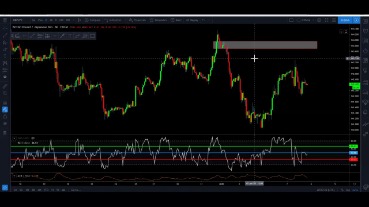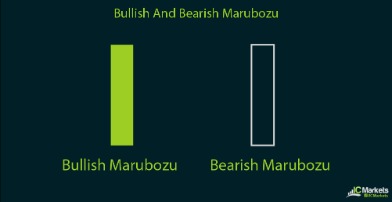
However, when looking to spot the patterns within patterns in trading, sometimes the shape of the patterns might seem counterintuitive. In the case of a falling wedge, both lines slope down, so people assume this pattern indicates a bearish bias. Falling wedges generally assume a bullish break once the asset price breaks out of the wedge pattern. The rising wedge is a bearish chart pattern found at the end of an upward trend in financial markets. It is the opposite of the bullish falling wedge pattern that occurs at the end of a downtrend. Traders recognize the rising wedge as a consolidation phase after a medium to…
Just like other wedge patterns they are formed by a period of consolidation where the bulls and bears jockey for position. There are two falling and two rising wedge patterns on the chart. If the rising wedge forms after an uptrend, it’s usually a bearish reversal pattern. Chart patterns are great ways to anticipate reversals of trends. Other indicators like MACD and RSI can help you figure out more exactly when but identifying chart patterns are a great way to see a reversal coming. With these you can more easily see how the range of a certain move is changing.
Signs You’ll Succeed as a Forex Trader
A wedge pattern is considered to be a pattern which is forming at the top or bottom of the trend. It is a type of formation in which trading activities are confined within converging straight lines which form a pattern. This pattern has a rising or falling slant pointing in the same direction. It differs from the triangle in the sense that both boundary lines either slope up or down. Price breaking out point creates another difference from the triangle.
- The formation of any triangle is a direction indication relevant to where you find it as some can be a warning if reversal.
- Deepen your knowledge of technical analysis indicators and hone your skills as a trader.
- In this post, we’ll show you a handful of ways to qualify a healthy…
- As a reversal signal, it is formed at a bottom of a downtrend, indicating that an uptrend would come next.
- Gradually, they become weaker, and at some moment the bulls, having bought all the bearish Sell orders, break this level away upwards, gathering Stop Losses and pending Buy orders.
- As you can see, there is no “one size fits all” when it comes to trading rising and falling wedges.
The first is that previous support levels will become new levels of resistance, and vice versa. Another common signal of a wedge that’s close to breakout is falling volume as the market consolidates. A spike in volume after it breaks out is a good sign that a bigger move is on the cards. One way to confirm the move is to wait for the breakout to start. Essentially, here you are hoping for a significant move beyond the support trendline for a rising wedge, or resistance for a falling one.
Falling Wedge FAQs
After the two increases, the tops of the two rising wedge patterns look like a trend slowdown. Hence, they are bearish wedge patterns in the short-term context. https://g-markets.net/ A falling wedge pattern will consist of a downward slope on the support level that is not as steep as the downward slope of the resistance level.
- For more information on this pattern, read
Encyclopedia of Chart Patterns,
pictured on the right, pages 98 to 114. - As the two lines begin to converge, the volume will also decrease until it reaches a breaking point, in which the asset price will break to the upside.
- However, this bullish bias can only be realized once a resistance breakout occurs.
- A candlestick pattern is a graphic representation of changes in price on a candlestick chart that some traders believe can predict future price movements.
A falling wedge chart pattern consists of both the top resistance line and the bottom support line sloping downward. However, the slope of the line of resistance at the top will be at a sharper downward angle than the support line at the bottom. In most cases, a falling wedge pattern signals the reversal of a previous trend, although it can also be a continuation pattern in some cases. Unlike a rising wedge pattern, a falling wedge pattern is typically considered a bullish trend. In the trading battle between buyers and sellers, the falling wedge indicates a period of time when the buyers are gathering strength and waiting to make a push to the upside.
Strategies to trade wedge patterns
During a trend continuation, the wedge pattern plays the role of a correction on the chart. For example, imagine you have a bullish trend and suddenly a falling wedge pattern develops on the chart. Thus, we expect a price breakout from the wedge to the upside. In the battle between buyers and sellers, you want momentum on your side. The falling wedge pattern is a consolidation period in which the buyers try to push the price up and the sellers try to push the price down.
Gradually, they become weaker, and at some moment the bulls, having bought all the bearish Sell orders, break this level away upwards, gathering Stop Losses and pending Buy orders. Of all the reversal patterns we can use in the Forex market, the rising and falling wedge patterns are two of my favorite. They can offer massive profits along with precise entries for the trader who uses patience to their advantage. Conversely, the two ascending wedge patterns develop after a price increase as well. For this reason, they represent the exhaustion of the previous bullish move.
Weekly Forex Forecast – EUR/USD, USD/JPY, WTI Crude Oil … – DailyForex.com
Weekly Forex Forecast – EUR/USD, USD/JPY, WTI Crude Oil ….
Posted: Sun, 03 Sep 2023 13:14:50 GMT [source]
It’s important to keep in mind that although the swing lows and swing highs make for ideal places to look for support and resistance, every pattern will be different. Some key levels may line up perfectly with these lows and highs while others may deviate somewhat. Let’s take a look at the most common descending wedge pattern stop loss placement when trading wedges. The same holds true for a falling wedge, only this time we wait for the market to close above resistance and then watch for a retest of the level as new support. There are two wedges on the chart – a red ascending wedge and a blue descending wedge.
Time Frame Matters
Join thousands of traders who choose a mobile-first broker for trading the markets. Harness past market data to forecast price direction and anticipate market moves. Deepen your knowledge of technical analysis indicators and hone your skills as a trader.
70% of retail investor accounts lose money when trading spread bets and CFDs with this provider. You should consider whether you understand how spread bets and CFDs work, and whether you can afford to take the high risk of losing your money. So, when the price makes lower lows, and every upcoming wave will be greater than the previous wave, it is understood that the price will take a big decision. But before taking a decision, they will eliminate the retail traders.
Taking Profit: It’s Easier Than You Think
Her expertise is in personal finance and investing, and real estate.

Similar to the breakout strategy we use here at Daily Price Action, the trade opportunity comes when the market breaks below or above wedge support or resistance respectively. The falling wedge is the inverse of the rising wedge where the bears are in control, making lower highs and lower lows. This also means that the pattern is likely to break to the upside.
Descending Broadening Wedge
However, that doesn’t always mean we will get a rounded retest. Although the illustrations above show more of a rounded retest, there are many times when the retest of the broken level will occur immediately following the break. In the illustration above, we have a consolidation period where the bears are clearly in control. We know this to be true because the market is making lower highs and lower lows. While both patterns can span any number of days, months or even years, the general rule is that the longer it takes to form, the more explosive the ensuing breakout is likely to be.
